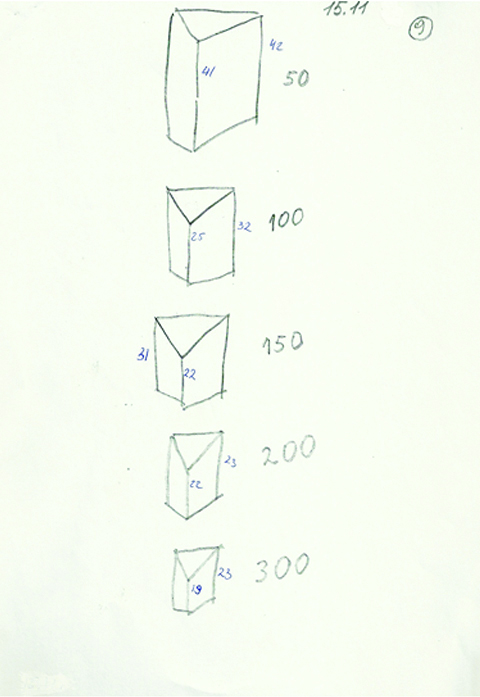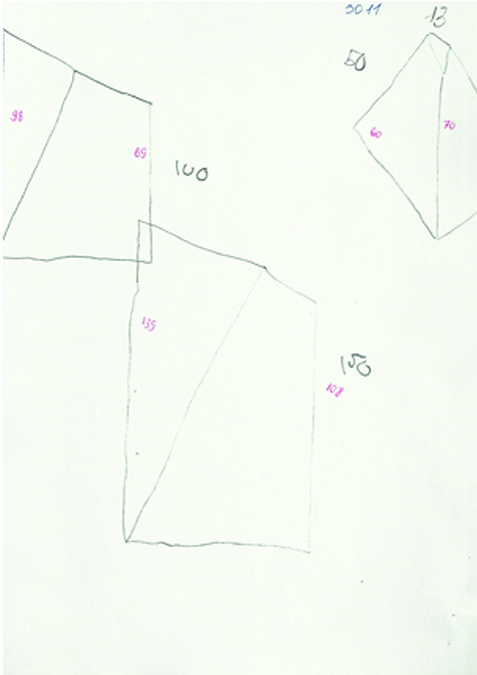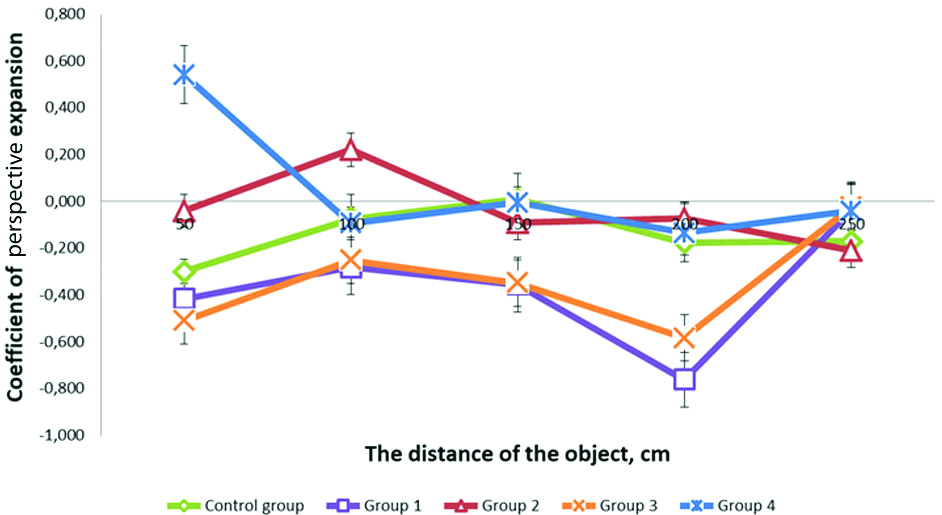It is known that various neuropsychiatric pathologies maybe accompanied by deviations from normal spatial perception [1-6]. Correction of such violations is possible with constant observation of the landscape, taking into account the peculiarities of perception. The aim of the study was to analyze the spatial perception of patients in a psychiatric hospital suffering from various mental disorders, differing in their emotional state. The desire is to find a way to equip the space of psychiatric hospitals such that the layout of the facilities evokes a beneficial response without aggravating the emotional conditions of the patients. To maintain a comfortable environment for the patients, there is a need for filling the space, as well as a need to avoid high and large objects. To achieve these aims, it is necessary to conduct a number of experiments to find out the degree of dependence of the patient’s spatial perception on the patients emotional and intellectual status.
Materials and Methods
Sixteen male patients, from the age range of 25 to 45 years from the Murmansk Regional Psychiatric Hospital (Russia) were selected (from the month November 2017 to December 2017), all of whom were suffering from schizophrenia according to Diagnostic and Statistical Manual of Mental Disorders fourth edition, text revision (DSM-IV-TR) criteria. The diagnosis was set according to DSM-IV-TR criteria on the basis of a semi-structured interview, using the Schedules for Clinical Assessment in Neuropsychiatry (SCAN) version 2.0. The patients were divided into four groups depending on their emotional state and degree of mental retardation based on medical records. Group 1 emotionally monotonous, Group 2 intellectually intact and emotionally unstable, Group 3 intellectually insufficient, Group 4 severe mental retardation.
Control group comprised of employees from the laboratory, matched for their gender and age without visual impairment and mental disorders were selected. All control subjects and patients gave informed consent and the protocol received approval from the Center’s Ethics Committee. The study was conducted using a standard graphic test to draw a three-dimensional solid object e.g. cube [Table/Fig-1,2 and 3] [7,8]. This figure is most often used for a similar study (Yellott JI Jr and Kaiwi JL) [8]. The subjects were asked to draw the object with defined parameters-having a side of 10 cm, made from thick paper in light green colour. In preliminary experiments, it was found that in case of complex mental disorders, patients are not always able to depict other 3D figures, such as cylinders.
The image example (patient number 9).

The image example (patient number 12).

The image example (patient number 13).

Apparently, the absence of faces completely disoriented their spatial perception, which is why they depicted cylinders in two dimensions in the form of circles, making it impossible to process the experimental data. The patients drew a cube at various points- 50, 100, 150, 200, and 300 cm away from the subject. When processing the experimental data, the height of the most distant and approximate faces of each drawn cube was measured, then the coefficient of perspective expansion was calculated. The value was determined using the formula for the difference between the far and near faces of the figure shown divided by the smaller of these faces.
k=(Hd-Hp)/Hmin,Hd: distal edge height; Hp: proximal edge height; Hmin: smallest edge height.
Positive values of the coefficient of perspective perception testify to the perspective expansion of the image of the depicted figure, i.e. reverse perspective of the image, negative about its perspective compression or direct (linear, renaissance) perspective. Typically, the coefficient of perspective expansion is expressed as a percentage. So, k=0.175 indicates that the far edge of the cube image is higher than the near one by 17.5%.
All of the participants and their custodians signed informed consent forms before the study, which was performed in accordance with the ethical principles described in the Declaration of Helsinki and its later amendments.
Results
After the experiments were conducted, the coefficients of perspective expansion for each patient and for the group as a whole were calculated. The graph [Table/Fig-4] shows the average values of the coefficient of perspective expansion for each of the selected groups.
Plot of the object distance coefficient.

During the study, it was shown that the value of the coefficient changes at different distances of the object from the patient within 3 metres [Table/Fig-4]. The predominance of a positive or negative coefficient depends on the psycho-emotional state of the patient and does not depend on the diagnosis. In emotionally monotonous patients (Group 1) negative values of the coefficient prevailed. In the group of intellectually intact emotionally unstable patients (Group 2), a change of positive and negative coefficients was observed in approximately equal proportions. The group of intellectually deficient patients (Group 3) had signs of axonometric perspective. In the group with severe mental retardation amongst patients (Group 4), a maximum was observed with a positive coefficient at a distance of 50 cm.
Discussion
The cube copying task is a well known task which consist of simple paper and pencil test and as a part of the Short Test of Mental Status (STMS) [9]. We found that for the overwhelming majority of the studied patients a certain set of local maxima are relatively stable, even with their periodic changes over time period. It can be assumed that a fairly stable location of these maxima within the scale we studied (50, 100-150 and 200 cm) reflects some universal mental states of the subjects, related to their emotional state and not related to the diagnosis, age, and social origin.
Conclusion
Therefore, when arranging the space of a medical garden or other psychiatric facilities, the phases of the development of the disease should be taken into account, for which its therapeutic effect should be directed.